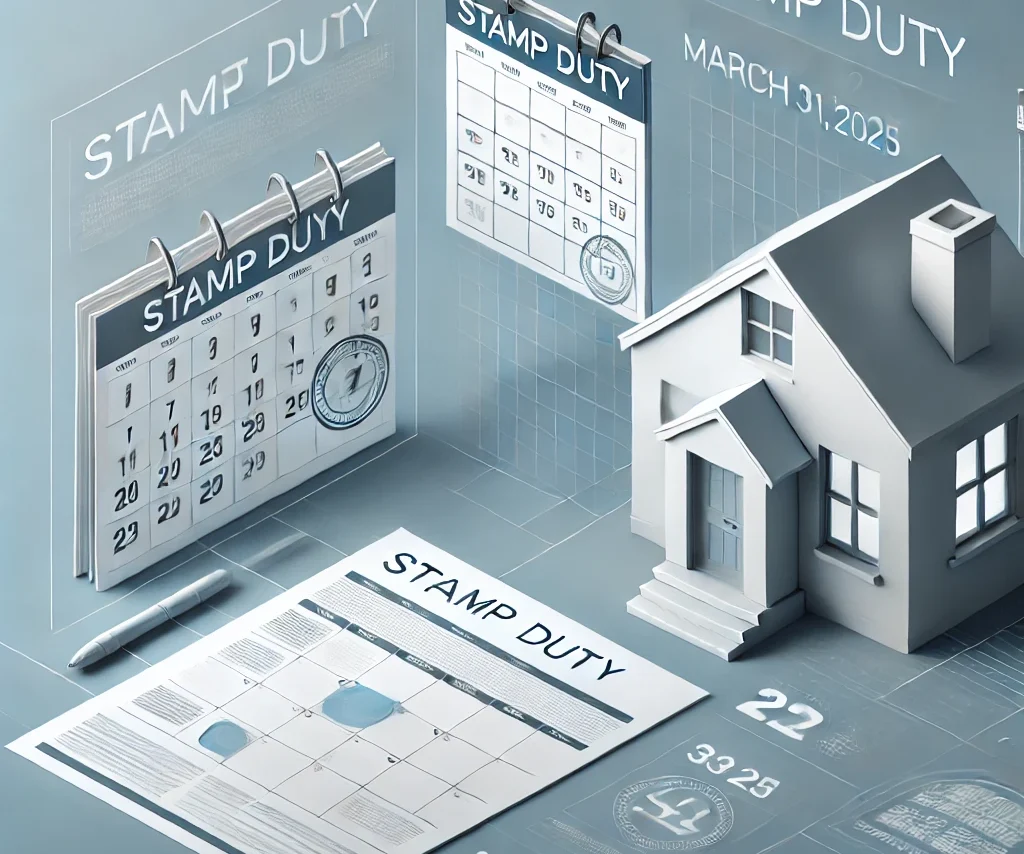
Introduction
In response to evolving housing market needs and economic conditions, the UK government has announced significant changes to the Stamp Duty Land Tax (SDLT), scheduled to take effect on 31 March 2025. These adjustments aim to provide a more balanced tax structure and to stimulate various segments of the housing market. This article covers the essential details of the upcoming changes, their impact on different types of buyers, and strategic advice for navigating the new rules.
1. Overview of the Stamp Duty Changes
Stamp Duty Land Tax is a progressive tax on property purchases, where rates apply in increasing bands based on the property’s purchase price. Starting 31 March 2025, new SDLT thresholds and rates will be implemented, potentially changing the financial outlook for first-time buyers, homeowners, and property investors. The new structure will see adjustments in the percentage rates for different property values, which could make certain thresholds more or less favorable depending on the property type and location.
Key expected changes include:
Revised percentage rates in each tax band.
Higher SDLT rates for investment properties and additional homes.
Specific reliefs aimed at first-time buyers to help them enter the housing market.
2. Impact on Buyers
These changes will affect various categories of property buyers differently:
First-Time Buyers: Expected incentives and adjustments could benefit first-time buyers by increasing the 0% SDLT threshold for lower-value properties. The new structure may reduce upfront costs, potentially making it easier for new buyers to step onto the property ladder.
Buy-to-Let Investors: Those purchasing additional properties will likely see increased SDLT rates, intended to curb rapid buy-to-let investment and free up housing stock for owner-occupiers. The new rates may reduce the profit margins for property investors, potentially impacting the rental market if fewer rental homes are available.
High-Value Property Purchasers: Buyers of high-value properties will face higher SDLT rates under the revised scheme. This adjustment aims to distribute the tax burden more evenly, especially for properties exceeding £1 million. Buyers in this category should prepare for higher upfront costs.
3. Regional Considerations
While Stamp Duty applies in England and Northern Ireland, it’s essential to note that Scotland and Wales have their respective systems—Land and Buildings Transaction Tax (LBTT) in Scotland and Land Transaction Tax (LTT) in Wales. These changes will not directly impact LBTT or LTT, but they may prompt further adjustments by the devolved governments, as they aim to maintain market competitiveness. Buyers in these regions should stay updated on any local tax changes that may follow the Stamp Duty update in England.
4. Potential Market Impact
Short-Term Market Surge: Buyers looking to avoid the higher rates may rush to purchase properties before 31 March 2025, leading to a potential surge in property transactions in the months preceding the change.
Long-Term Adjustments: Once the new rates take effect, we may see a cooling in certain market segments, especially among investors and high-value property buyers. This slowdown could result in more stable pricing in some areas, benefiting owner-occupiers in the long run.
Rental Market Implications: With higher SDLT rates for buy-to-let properties, rental property availability could decline, potentially increasing rental prices. This impact might make it challenging for renters but could offer an incentive for those looking to transition from renting to ownership.
5. Strategic Advice for Prospective Buyers
If you’re considering buying a property in the next few years, here are some strategies to navigate the changing Stamp Duty landscape:
Time Your Purchase Wisely: If you’re buying an investment property or high-value home, it may be financially advantageous to complete your purchase before 31 March 2025 to benefit from the current SDLT rates.
Take Advantage of First-Time Buyer Relief: If you’re a first-time buyer, assess how the new structure might lower your upfront tax cost. The increased threshold for the 0% SDLT rate could significantly reduce your expenses, making it an opportune time to enter the market.
Consult a Property Tax Expert: A tax consultant or property adviser can help assess the new SDLT implications and structure your purchase for maximum tax efficiency. They can guide you on the best timing and approach based on your budget and property goals.
Consider the Potential Rental Market Shift: For buy-to-let investors, higher SDLT rates mean it’s crucial to evaluate potential rental income and property appreciation to ensure your investment remains profitable under the new rates.
6. The Government’s Rationale Behind the Changes
The primary objectives of these changes are to create a more equitable property tax system and promote accessibility in the housing market, particularly for first-time buyers. By increasing SDLT rates for additional homes and high-value properties, the government aims to ease competition for housing and support owner-occupiers in securing property. Additionally, the increased tax revenue from higher SDLT rates on investment properties will contribute to funding public services and supporting economic development.
The government’s decision to modify SDLT aligns with broader policies intended to address the housing shortage and rebalance the market in favor of those looking to buy their first home.
7. Conclusion
The upcoming changes to Stamp Duty mark a significant shift in property tax policy, with substantial implications for buyers across the spectrum. Whether you’re a first-time buyer, an investor, or purchasing a high-value property, it’s essential to understand the revised tax rates and assess how they will affect your financial planning. By strategically navigating these changes, buyers can make informed decisions that align with their long-term property goals.
With the 31 March 2025 deadline on the horizon, now is the time to evaluate your options, consult with property experts, and consider whether accelerating or delaying your purchase aligns with your financial objectives. Stay informed and prepared to make the most of the opportunities that this evolving tax landscape offers.




